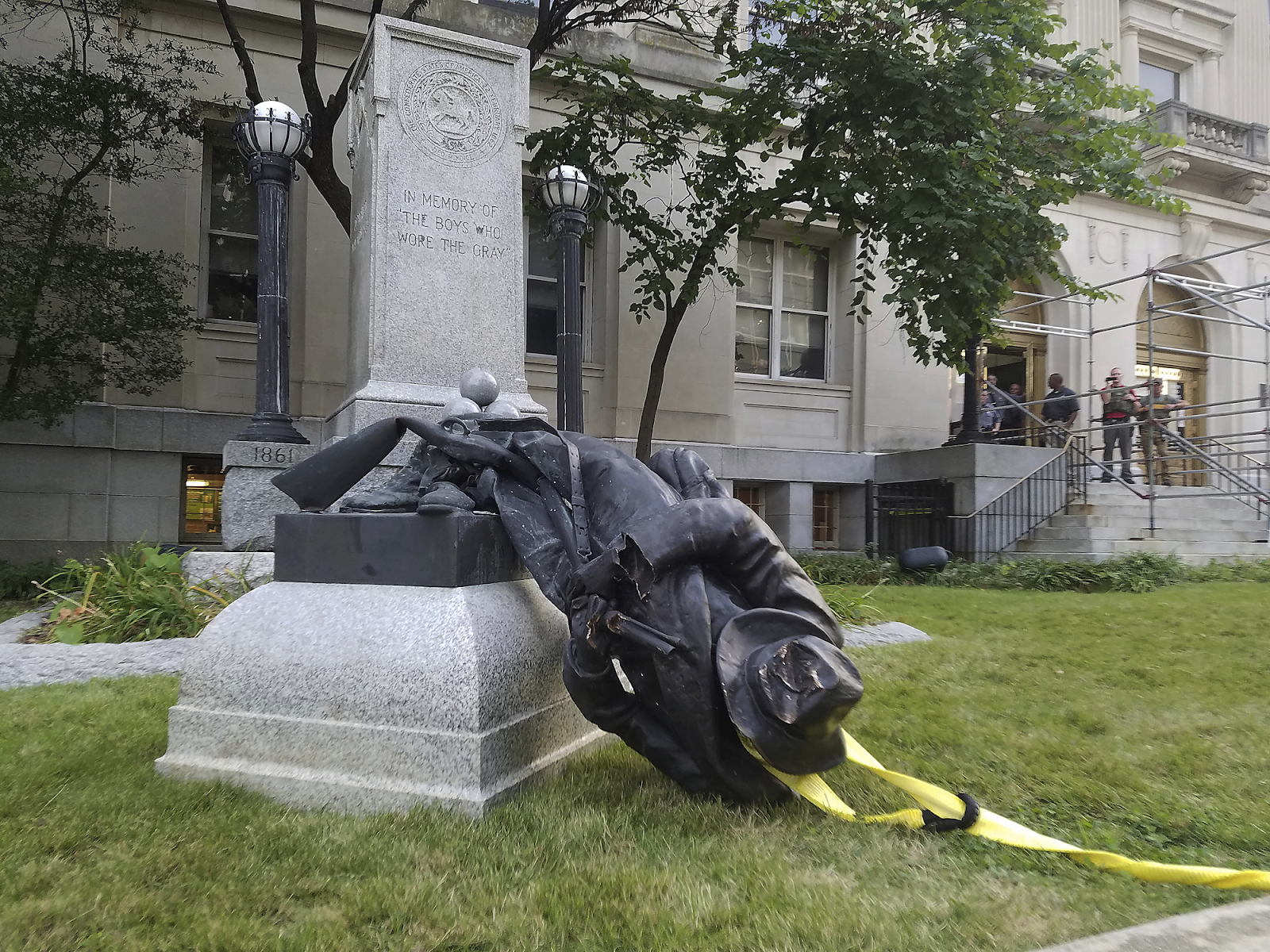The Controversy Surrounding the Removal of Confederate Statues

Image Courtesy of the Mercury News
By Anna Harvey
In the wake of George Floyd’s murder due to police brutality, cries of outrage rippled across the United States, resulting in both national and international protests against police brutality and systemic racism. Floyd’s murder comes shortly after the murders of Ahmaud Arbery, who was shot by white truck drivers while jogging in February, and Breonna Taylor, who was shot by white police officers with a no-knock warrant in March.
In response to these tragedies and the subsequent protests, many Southern local governments have removed prominent Confederate landmarks. According to Forbes, the U.S. publicly sponsors 1,747 Confederate symbols, which includes statues, plaques, flags, and the names of educational institutions and roads.
Calls to remove these Confederate landmarks are not unique to 2020. In 2015, after a white supremacist shot nine black churchgoers in Charleston, South Carolina, calls erupted for the removal of these Confederate landmarks. Consequently, in 2017, the mayors of New Orleans and Baltimore removed all Confederate monuments from their cities, and 114 landmarks were removed nationwide.
Many of the Southern Confederate landmarks were erected roughly between the late 19th and early 20th centuries in order to preserve a mentality called the “Lost Cause.” This mentality sought to conserve Southern ideals in the face of “Northern aggression.” Following the Civil Rights Movement and into the 21st century, however, scholars and activists deem that preservation of the “Lost Cause” was a whitewashed nostalgia of Southern mindsets and customs during the Civil War, the most prominent of which is slavery.
In a similar vein to the “Lost Cause,” opponents of the landmark removals stated that many of these statues and monuments are “sacred” to their community and their Southern heritage. Others appeal to history, arguing that to remove landmarks is to try to erase the mistakes of America’s past.
Currently, one of the most controversial monuments to be removed is a Confederate statue of General Robert E. Lee in Richmond, Virginia. While Governor Ralph Northam declared on June 4 that he would remove the statue from state property, Circuit Judge Bradley B. Cavedo indefinitely extended an injunction to prevent the state from taking down the statue.
Similar to Virginia, in Alabama, Governor Kay Ivey signed the Alabama Monuments Preservation Act in 2017, which prevents municipalities from removing Confederate landmarks. Following the 2020 protests, Mayor Sandy Simpson of Mobile relocated a 120-year-old statue of Admiral Raphael Semmes, a Confederate Navy officer, to a local museum. The city now faces a $25,000 fine for violation of the 2017 Act. Other cities in Alabama, such as Birmingham, now look to take actions such as Mobile to remove Confederate monuments in spite of the Act.
Amidst the calls to remove landmarks, Confederate monuments are not the only memorials that have been targeted for removal. Across the nation, protestors and state governments took down statues of other historical figures that could perpetuate racism. One figure in particular that the protestors identified is Christopher Columbus, who discovered the Americas, yet ushered in European colonization, the trans-Atlantic slave trade, and the terrorization of Native American tribes.
While many of these landmarks have been removed by state and city governments, others have been demolished or defaced by protestors. Following some of these violent demolitions, state governments currently attempt to remove these statues so as to preserve the safety of the public. Meanwhile, the debate still continues as to whether these landmarks ought to be preserved in museums for historic value, or ought they to be removed entirely from the public eye, so as not to be a reminder of America’s racist past.








